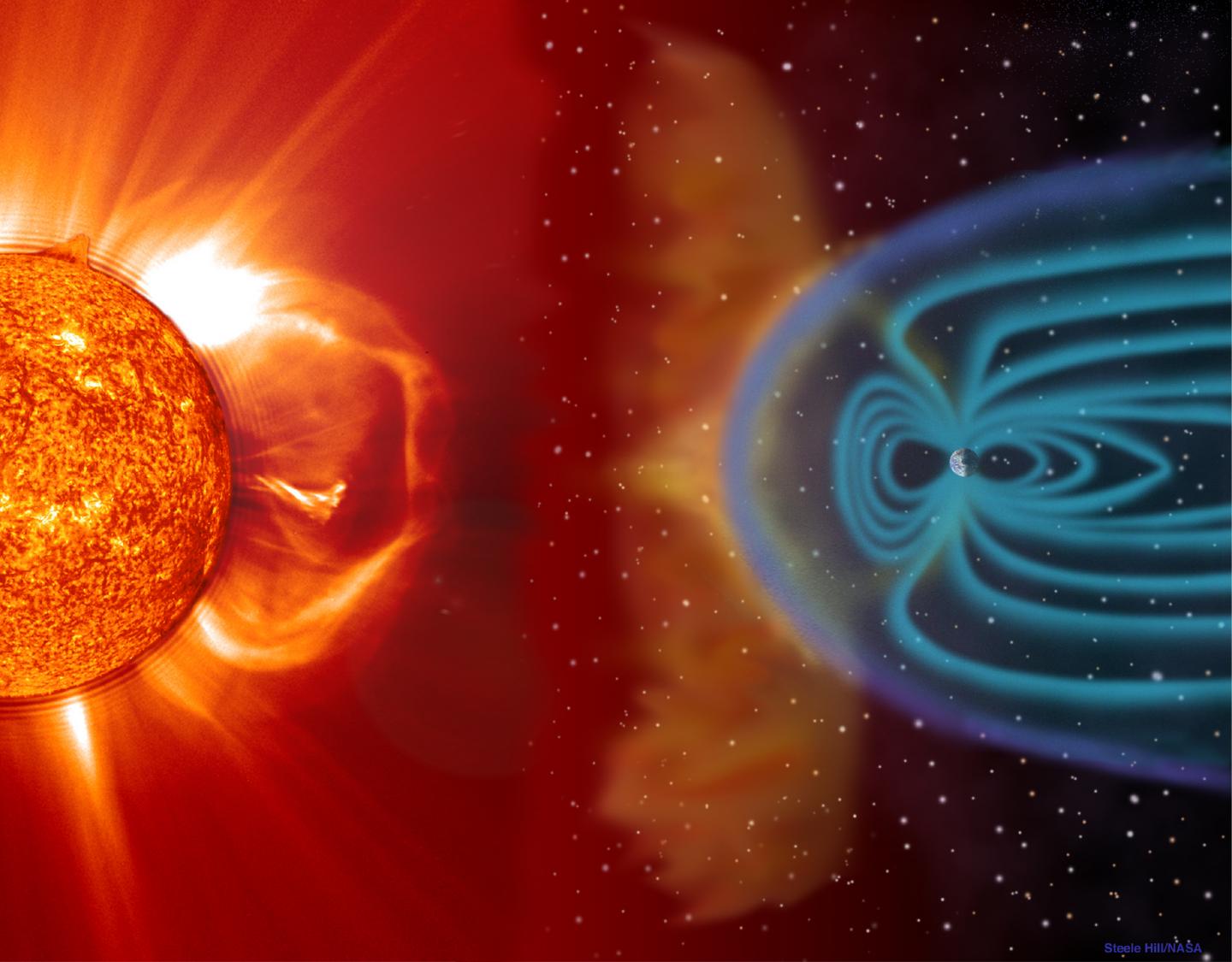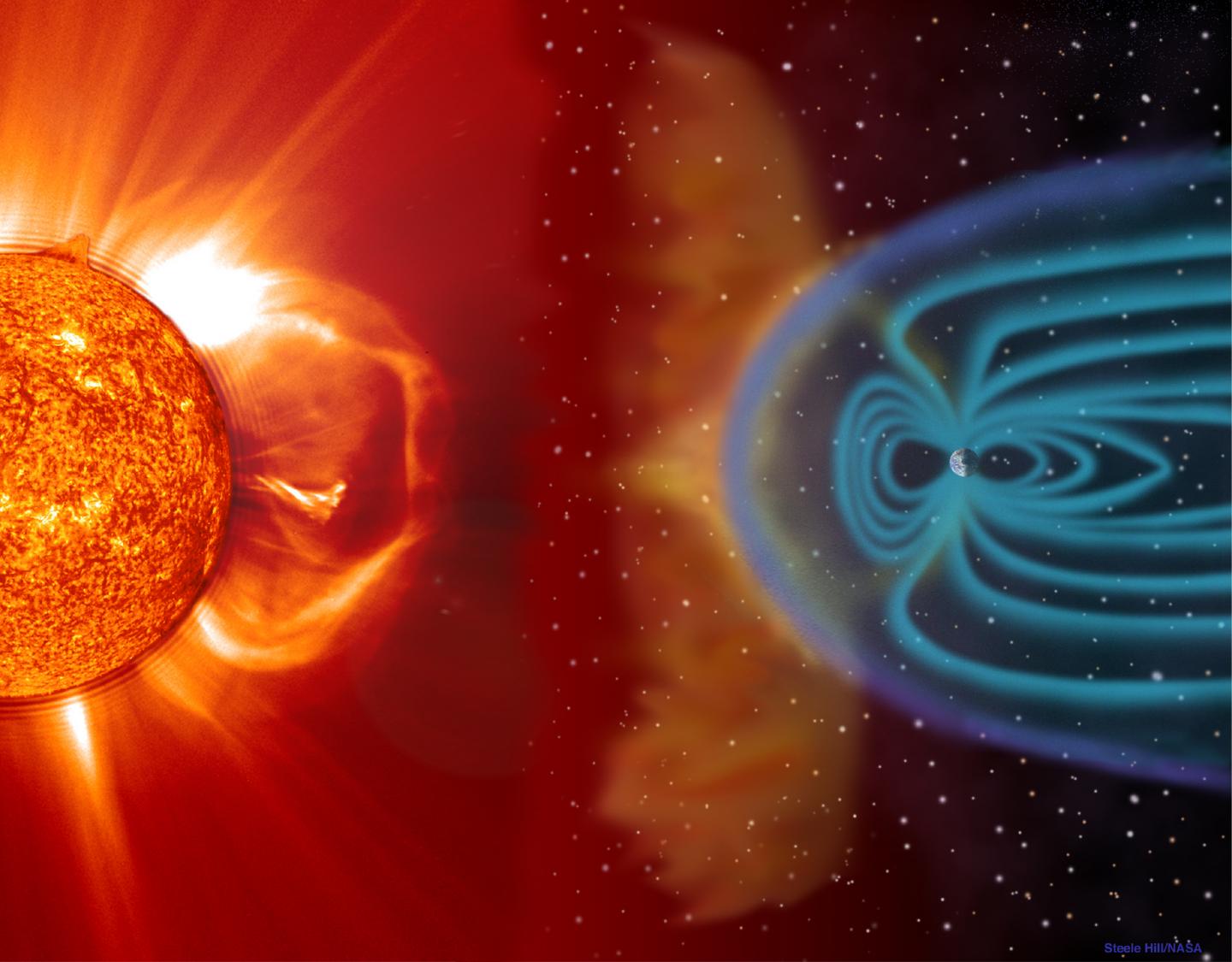
Credit: NASA/SOHO
It's not a bird or a plane but it might be a solar storm. We like to think of astronauts as our super heroes, but the reality is astronauts are not built like Superman who gains strength from the sun. In fact, much of the energy radiating from the sun is harmful to us mere mortals.
Outside Earth's protective magnetic field and atmosphere, the ionizing radiation in space will pose a serious risk to astronauts as they travel to Mars. High-energy galactic cosmic rays (GCRs) which are remnants from supernovas and solar storms like solar particle events (SPEs) and coronal mass ejections (CMEs) from the sun can cause harm to the body and spacecraft. These are all components of space weather.
When astronauts travel in space they can't see or even feel radiation. However, NASA's Human Research Program (HRP) is studying the effects radiation plays on the human body and developing ways to monitor and protect against this silent hazard.
"Dosimeters and modeling techniques are used to determine how much energy is deposited in the space explorer's bodies along with inflight tools to try to estimate what type of biological effects they might be experiencing," said Tony Slaba, Ph.D., NASA research physicist. "Solar storms can cause acute radiation sickness during space flight which has to be dealt with in real time. There's also an additional risk from exposure to GCRs which may cause central nervous system effects and delayed effects related to cancer and cardiovascular disease after the mission."
While shielding strategies for GCRs remain difficult due to their extremely high energies, pharmaceutical countermeasures may be more effective than thick shielding to protect the crew from GCRs. NASA also is developing space weather forecasting tools to provide advance warning of SPEs. Solar protons can be easily shielded against for protection.
The HRP is performing a variety of research to identify and validate biological countermeasures for protection. It researches an array of shielding design strategies that include ways to mitigate exposure from all forms of space weather. Historical worst and best case space weather scenarios are used to drive designs. Habitat design and overall vehicle optimization is being investigated to reduce the inflight risks from solar storms. These design strategies, coupled with the human research on the biological effects of space radiation will allow astronauts to travel farther from Earth than ever before.
As NASA embarks on the next big journey to send humans to Mars, it is imperative to protect our super heroes against the dangers of space. By implementing the best methods and technologies against the villain of space radiation, the journey may not be faster than a speeding bullet, but it will be safer.
###
NASA's Human Research Program (HRP) is dedicated to discovering the best methods and technologies to support safe, productive human space travel. HRP enables space exploration by reducing the risks to astronaut health and performance using ground research facilities, the International Space Station, and analog environments. This leads to the development and delivery of a program focused on: human health, performance, and habitability standards; countermeasures and risk mitigation solutions; and advanced habitability and medical support technologies. HRP supports innovative, scientific human research by funding more than 300 research grants to respected universities, hospitals and NASA centers to over 200 researchers in more than 30 states.
Amy Blanchett
Laurie Abadie
NASA Human Research Strategic Communications
Media Contact
Amy Blanchett
[email protected]
@NASA_Johnson
http://www.nasa.gov/centers/johnson/home
Original Source
https://www.nasa.gov/feature/nasa-protects-its-super-heroes-from-space-weather





